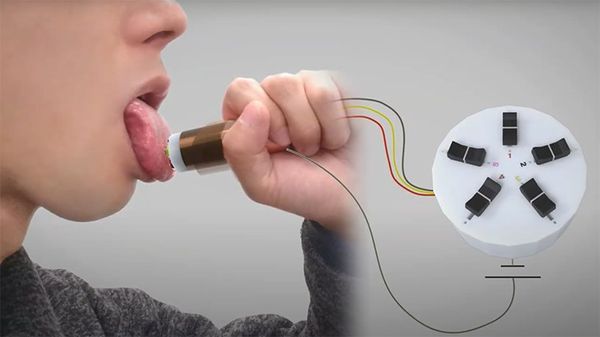1977 marked the start of a new era in the history of both the Hungarian games industry and Hungarian design: this was the time when the production of the “magic cube” started within the walls of Politechnika Ipari Szövetkezet (Politechnika Industrial Cooperative Society). The groundbreaking invention of Ernő Rubik is still quite a big hit after forty years, and there were hardly any puzzle games that could live up to it ever since. It seems that the historic moment that took place a few decades ago could repeat itself in 2020, with LavosBall, János Szabolcs’ innovation being placed into production soon. We saw it, we tried it, and now we’ll tell you all about it.
We are on our way to the second floor of Jurányi House, to the workshop of János Szabolcs, E8 Labor. We can’t wait to hold the Lavosball in our hands, as we could only see it on the screens until then, yet this kind of experience is hardly enough in the case of a new logic game. We enter an office consisting of several work stations (without any workers), with a white conference table in the center, and a cozy and organized chaos in all directions, with some quite notable details: a mannequin dressed in a futuristic puffer jacket, a lounge chair hanged down from the ceiling, with VR glasses. As we are later informed, these are all János’ inventions: he has been working on the armchair for years, even his kids (quite young at that time) helped him in “testing”, and the coat is super warm and practical – it was inspired by the armor of armadillos (later on, we also find vision correction glasses, which we tried immediately).
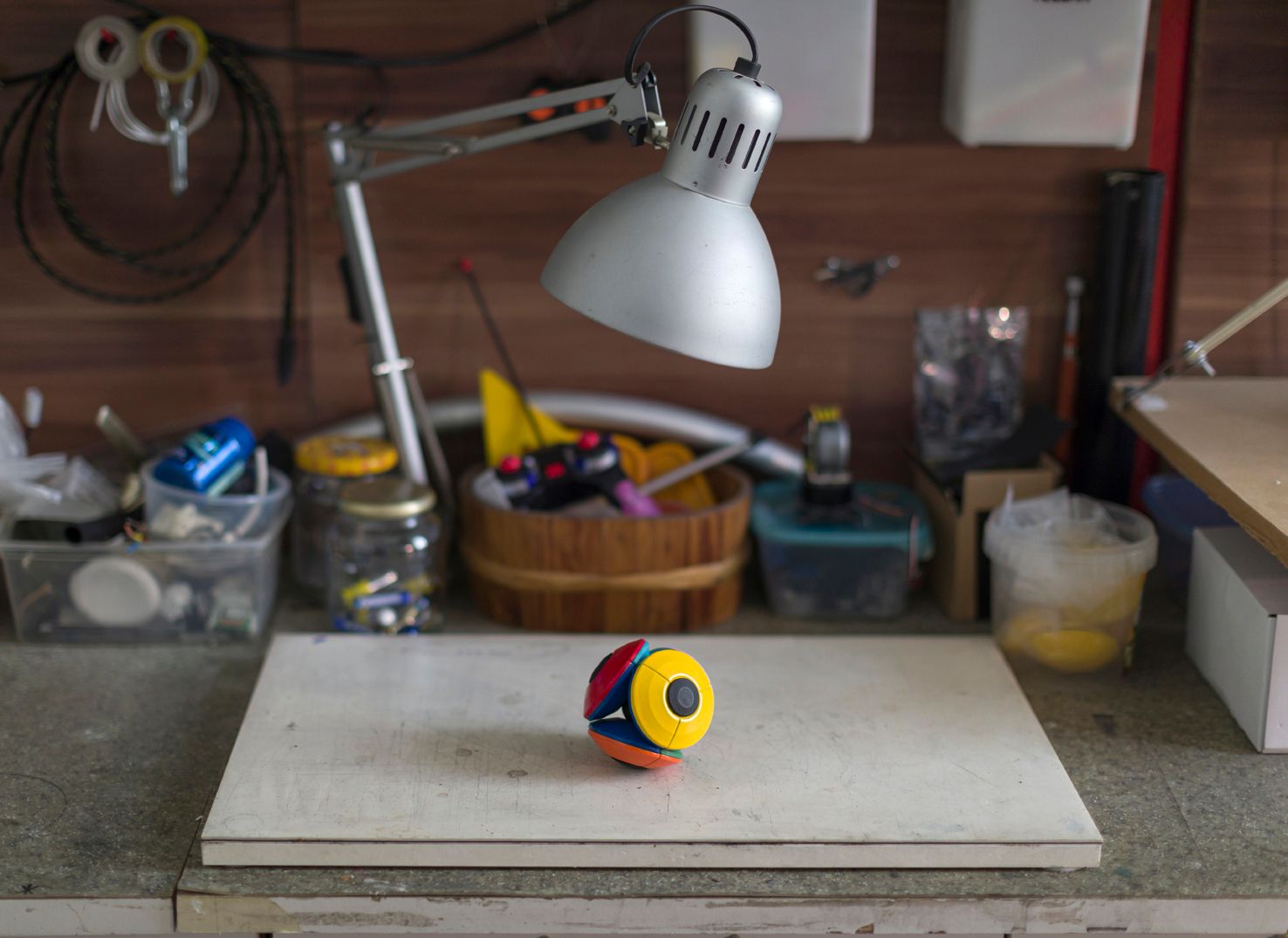
János Szabolcs has been doing this for some time now: he always liked to experiment, to invent new things, going after things himself and figuring out secrets, may it be an object, an advertisement or a movie. Even though he comes from a family of agricultural workers, this path never appealed to him, as he was looking for a more exciting challenge: he studied interior design and furniture design at the College of Applied Arts as well as scenic design at the College of Visual Arts at the same time, and later on he worked for Katona József Theater and MAFILM Studio for years. In the past twenty years, he worked as a production designer in many Hungarian and foreign movies, he was even nominated for an Emmy in 2004 for the movie “The Lion in Winter”, in which he participated as an art director. We had a long conversation sitting at the table of the workshop established in the back of the E8 Labor about the secrets of film production and the trance we get into while watching a movie (we see a lot of posters on the walls that were used in sets of movies). János even told us the memorable story when during the first “Megasztár” (Hungarian talent show), the set he envisaged was mistaken for a LED wall, yet it was a yogurt cup covering a few square meters, some paint and well-thought-out lighting.
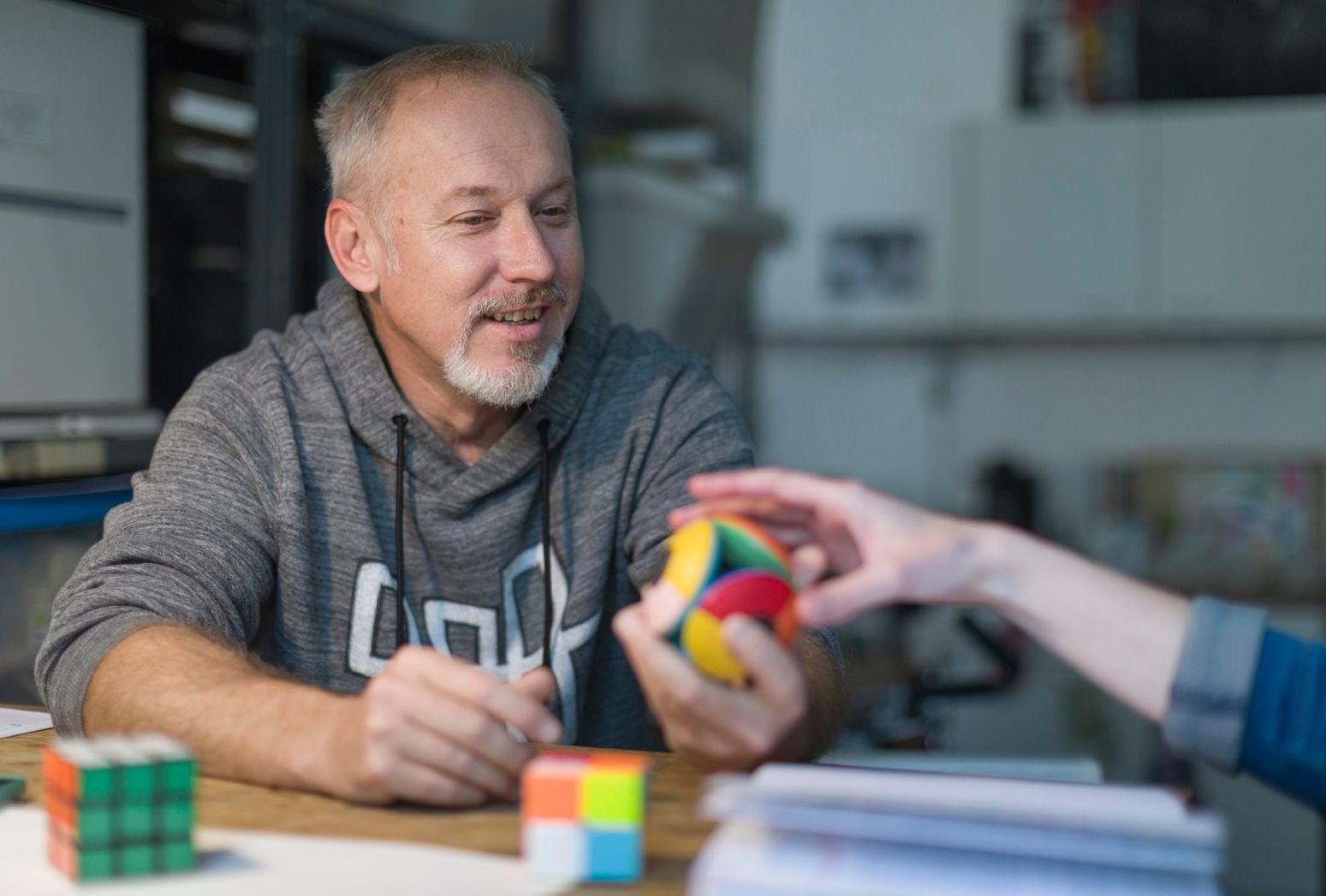
There are two Rubik’s cubes on the workshop table, and there is also the latest prototype of LavosBall, the current format of which is the result of lengthy experiments. The object was inspired by Ernő Rubik’s “magic cube”, amongst others: the Hoberman ball increasing its own volume, the hexaflexagon that can be folded from paper and the Epimenides paradox were all needed so that the idea of LavosBall could be manifested. “The four Horsemen”, as János likes to call them, were the main source of inspiration for designing the ball.

János held the first colorful and functioning piece in his hands in the summer of 2017. It took him 45 minutes to solve it. Soon after, he gave the ball to her 18-year-old daughter walking into the workshop without giving any sort of instructions to her: she managed to solve the task in approx. 30 minutes. And what is the task exactly? In opposition to the classic Rubik’s Cube, where the six sides must be solved, here there are 4+4 sides waiting to be solved: we must arrange the four reels on the surface of the sphere out of the same colors. Each reel consists of three elements of identical size, we can change their positions by spinning them, but in order to do so, we must get to the inside of the object, which means that we have to turn the ball inside out by pressing the middle axis of the reels. The difference between the LavosBall and the Rubik’s Cube can be grasped the best in this movement: here we have to solve the visible and the hidden parts at the same time. This time, the “inside and outside” experience of the puzzle also resembles a magical trick, which gets us even more in the mood for playing. One side of the ball is painted in warm, while the other side is painted in cold colors.
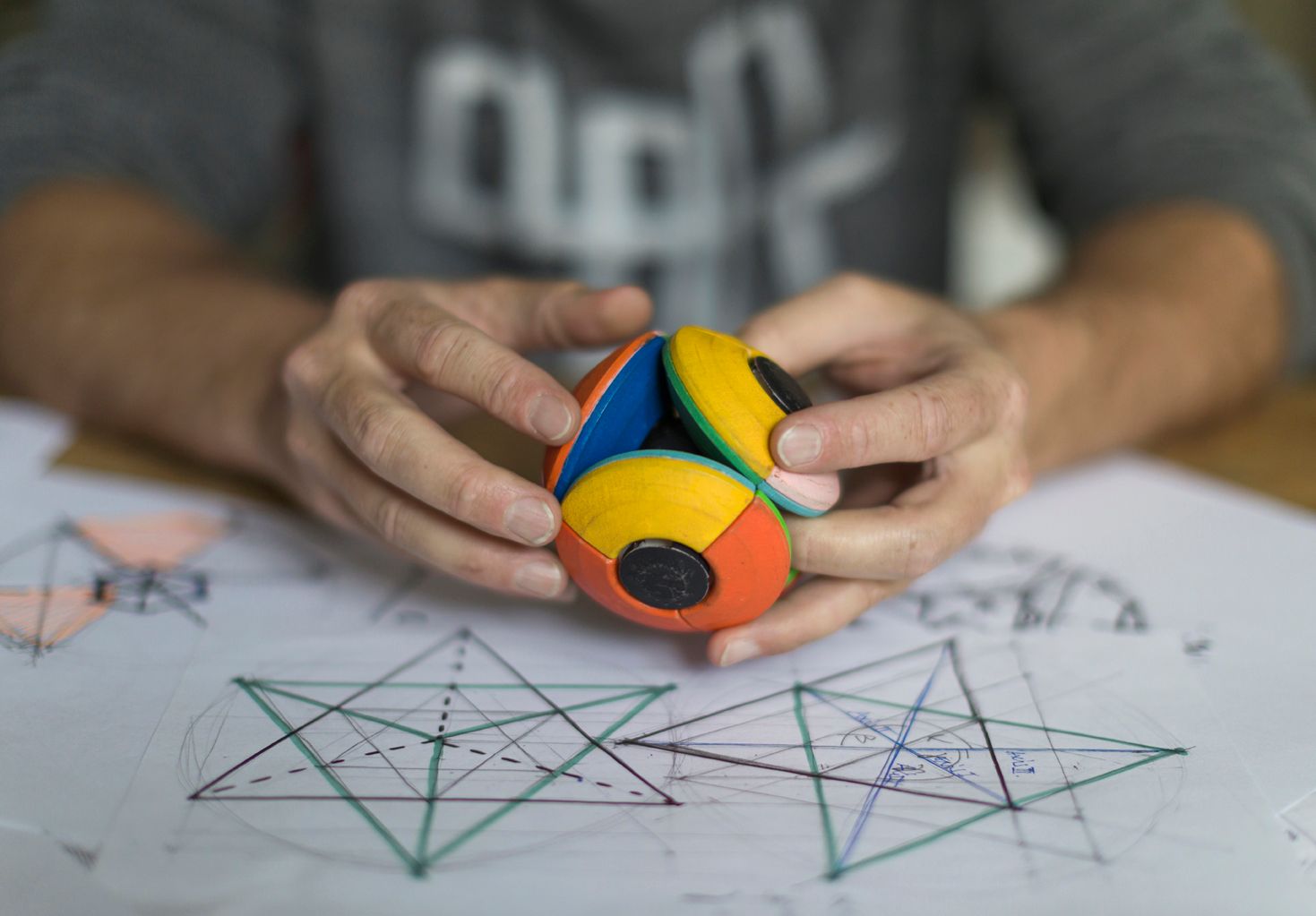
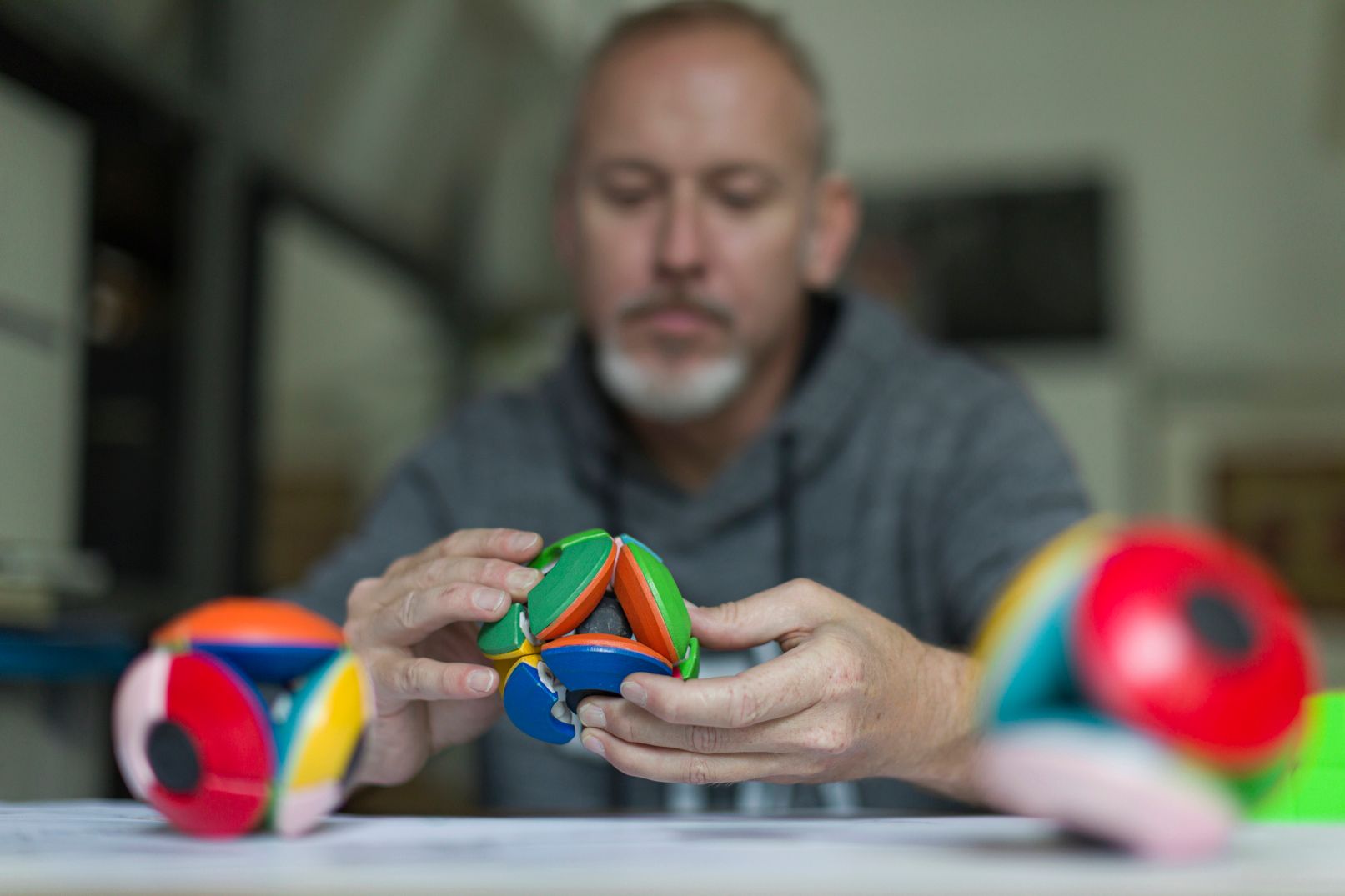
Over the years, many prototypes were tested by János and his colleagues, and he also showed us some of them. As the “magic cube” was also made of wood initially (it was held together by paper clips and rubber bands), LavosBall was also a heavy and robust piece in the beginning, with hardly spinning, manually painted parts, with a kind of DIY feeling to it. The first balls manufactured with 3D printing were more fragile and it happened many times that they jumped out of the hands of colleagues suddenly when flipping them over, or that they painfully caught the finger of the person testing them while closing. János claims that these experiences were all needed to realize how not to make a Lavosball (as Edison also needed 3000 unsuccessful attempts to know how not to make a light bulb). On top of it all, 3D printing is not the cheapest technology, manufacturing a new version may costs hundreds of thousands of Forints – but this is what the process of product development is like.
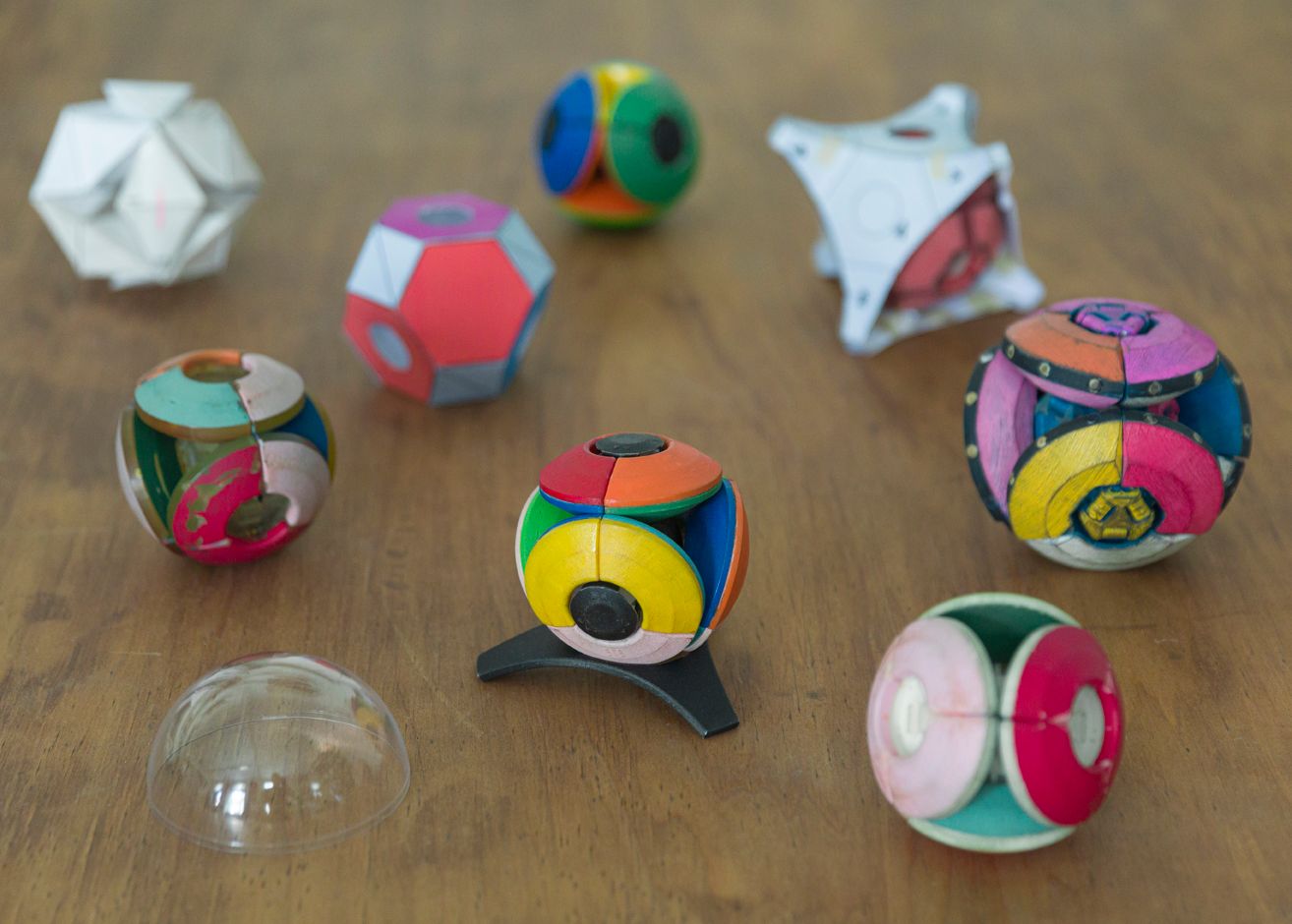
The first functioning prototype was made in the fall of 2018, which also meant the commencement of the patent procedure at the same time, first in Hungary and then on an international level. As János points it out, it is worth dedicating the necessary attention and energy to the seemingly boring and lengthy process: the international launch of the Rubik’s Cube (otherwise successful from a business perspective) was undermined by the fact that it wasn’t patented after its debut in Hungary in 1977 internationally. It seems that the several year long Walk to Canossa cannot be evaded either way – this was partly the reason why they had to wait with the official launch of LavosBall until 2020.
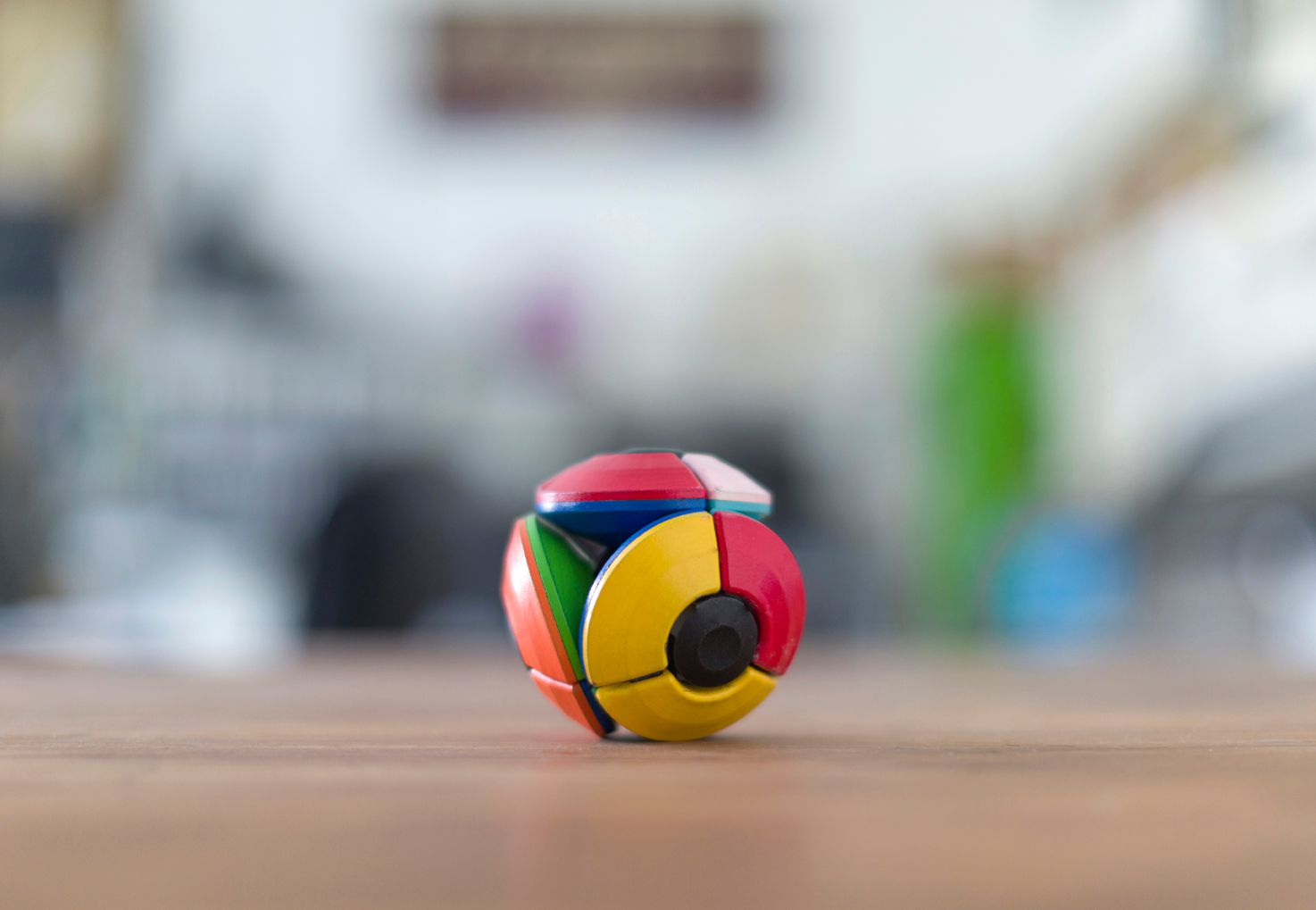
And where did the name come from? In one of his blog entries, János tells the story in detail how he ended up with the name Jan Lavos after he found himself in quite an adventure owing to an incorrectly filled flight ticket. As a result of the “rechristening”, he had no choice but to drive all the way through the Atlas mountains to arrive to Casablanca and then to get back to Budapest with several transfers, at any cost. János says he doesn’t regret it in hindsight: perhaps LavosBall wouldn’t exist if it weren’t for this adventure, at least in terms of the name.
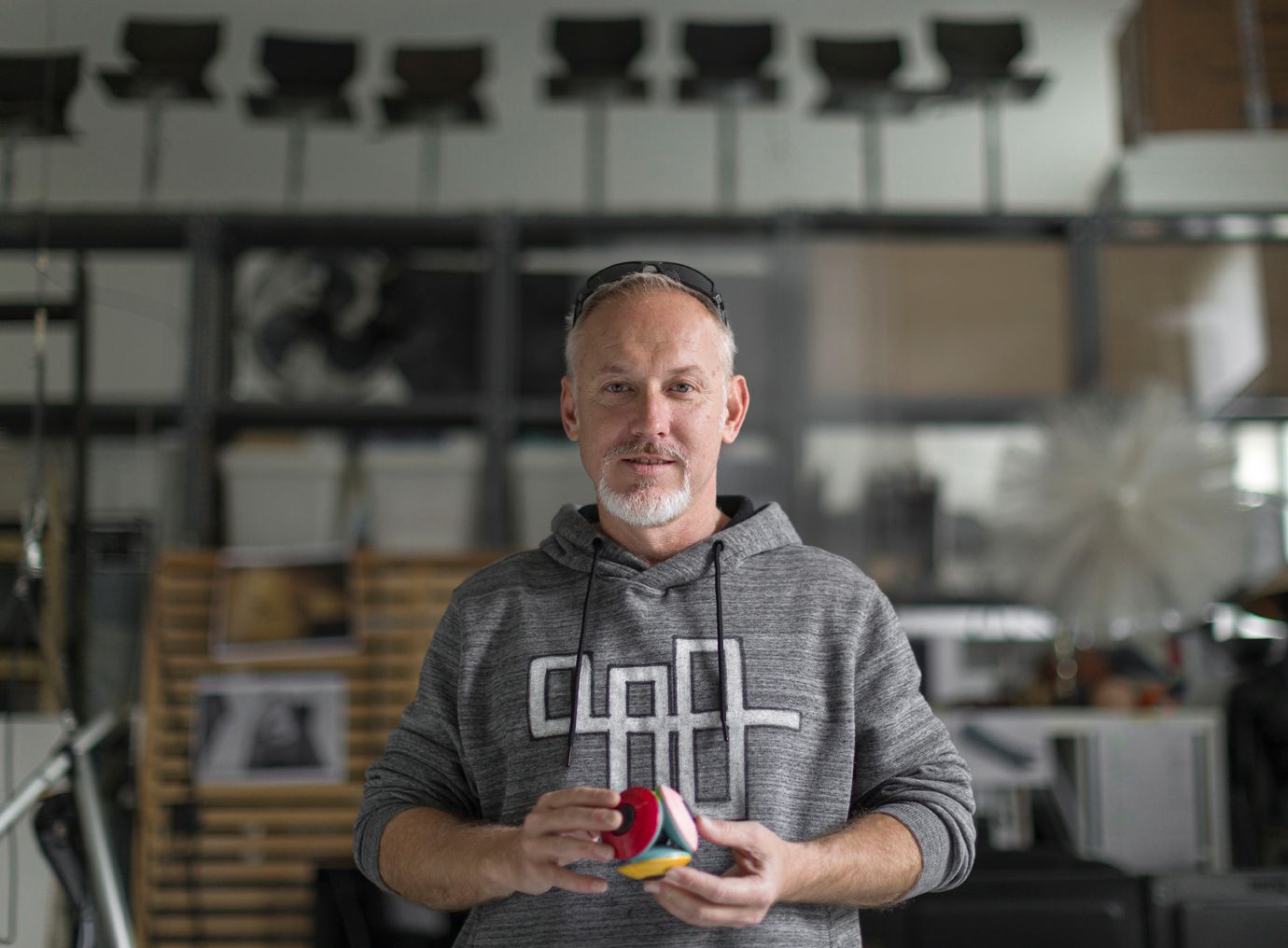
János is in charge of the design tasks of the puzzle, but in order for the object to be marketable as a product, a complex teamwork was needed. János does not consider himself a boss, he thinks that every member of the team is equally important, as each and every one of them is responsible for different fields, with common goals. Understanding and planning the processes of the Indiegogo campaign was a learning process for János, just like product development itself.
As the project management itself is built on open team members who love to experiment, LavosBall becoming a product is also primarily built on the community. This is why János opted for crowdfunding, because he didn’t want to trust a single investor with the fate of his product. He saw Indiegogo as a good option because in this case, many small investors give a vote of confidence to a project without interfering with management.
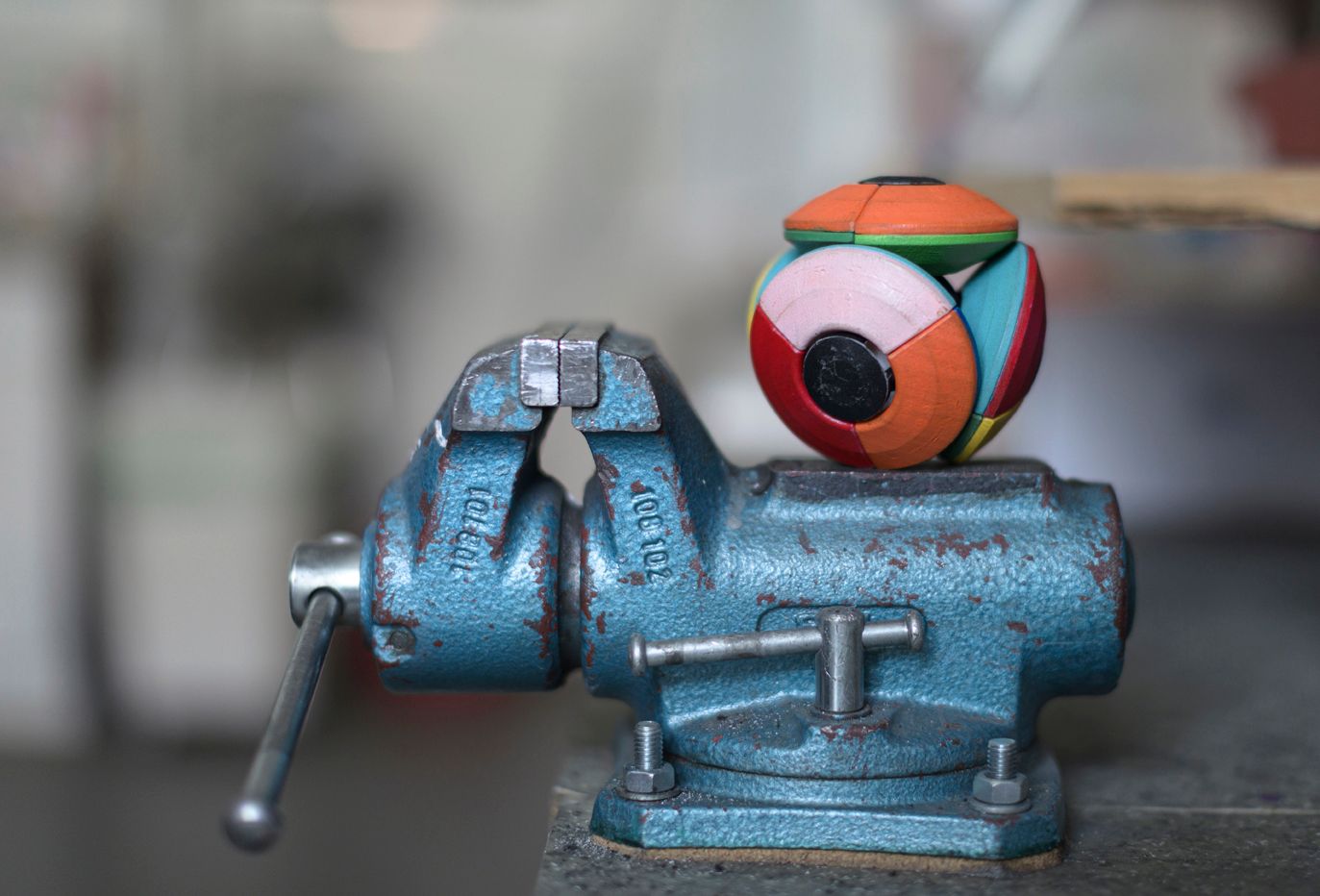
LavosBall is currently in a so-called pre-launch phase, which means that they need 6000 subscribers for the actual launch of the campaign (one person can subscribe with several e-mail addresses). Even though we are talking about a perfectly ordinary thing, for the team of LavosBall, subscriptions mean that there is demand for “the Rubik’s Cube of the future”. “The fact that all these people honor us with their attention means primarily an opportunity for us: an opportunity for LavosBall to able to compete on the market” – János explains. And of course, in addition to receiving first-hand information about the available package offers, those who subscribe will be able to say: “I was there at the launch of LavosBall.”
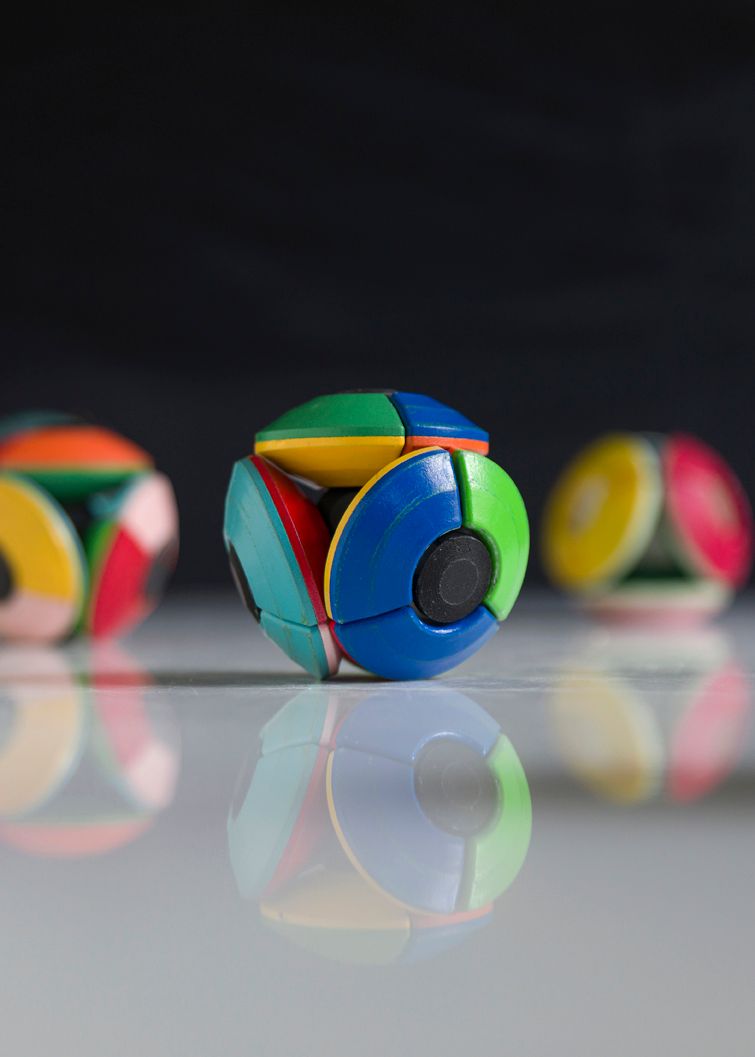
In the case of a successful campaign, 10,000 LavosBall games will be manufactured, which the buyers will receive at latest in the second half of the year. So those who don’t want to leave their Christmas gifts to chance this year and would love to be one of the first LavosBall owners should subscribe now, as the game will not be available commercially (at least for now). In addition, those subscribers who also register will be able to purchase LavosBall for an extra discounted price, for approx. 35 dollars.
János and his team (and now us too) know this exactly: so that Lavosball can suck someone in completely, they have to experience the game. This is why they will announce open days, where those interested will be able to try the ball. The members of the team would very much appreciate cubers with experience in similar games and eager to test LavosBall, and of course unexperienced but even more curios users will also be welcome in E8 Labor.
Subscribe now! (we already did)

Back to nature | Ark-shelter

Alpacas in infrared | Paolo Pettigiani
